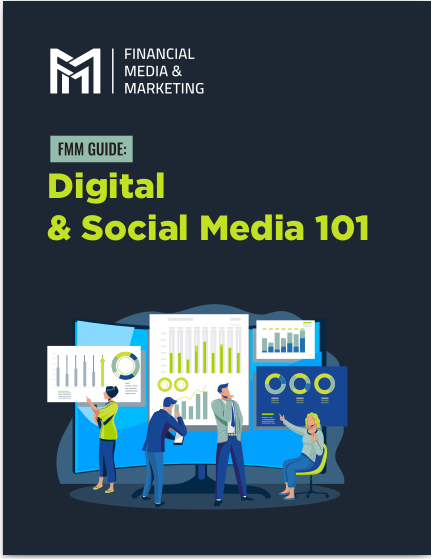Key Takeaways:
- Social media is a powerful tool for financial advisors to connect with potential clients and build their brand.
- Choosing the right platforms, creating valuable content, engaging with your audience, and using analytics are essential strategies.
How to Put Social Media to Your Advantage as a Financial Advisor
Social media has become an indispensable tool for financial advisors looking to expand their reach, connect with potential clients, and build their brand. With the right strategies, you can effectively leverage social media to your advantage. Here’s how to do it.
Choosing the Right Social Media Platforms
Not all social media platforms are created equal, and not all of them will be beneficial for your financial advisory practice. It’s important to focus on platforms where your target audience is most active.
LinkedIn is the go-to platform for professionals. It’s ideal for financial advisors looking to connect with other professionals, share industry insights, and establish themselves as thought leaders.
- Build a Professional Profile: Ensure your LinkedIn profile is complete and professional. Highlight your experience, credentials, and areas of expertise.
- Join Groups: Participate in LinkedIn groups related to financial planning and investing. Engage in discussions and share your insights.
- Publish Articles: Use LinkedIn’s publishing platform to write articles on financial topics. This can help you reach a broader audience and demonstrate your expertise.
Facebook is great for building a community and engaging with a wider audience. It allows for more personal interaction and is suitable for sharing a variety of content types.
- Create a Business Page: Set up a Facebook business page for your financial advisory firm. Post regularly about financial tips, market updates, and company news.
- Use Facebook Live: Host live Q&A sessions, webinars, or discussions on financial topics. This can increase engagement and allow you to interact with your audience in real time.
- Join Groups: Like LinkedIn, Facebook also has groups where you can participate in discussions and share your knowledge.
Twitter is excellent for sharing quick updates and industry news and engaging in conversations. It’s a fast-paced platform that can help you stay relevant and connected.
- Share Insights: Tweet about market trends, financial news, and tips. Use relevant hashtags to reach a broader audience.
- Engage in Conversations: Follow industry leaders, engage in discussions, and respond to tweets. This can help you build relationships and gain followers.
- Participate in Twitter Chats: Join or host Twitter chats on financial topics. This can boost your visibility and establish you as an expert.
Instagram is a visual platform that can be useful for sharing personal stories, client success stories, and behind-the-scenes looks at your practice.
- Share Visual Content: Post images and videos that showcase your office, events, or infographics on financial topics.
- Use Stories: Instagram Stories are great for sharing quick updates, tips, and insights. They disappear after 24 hours, making them ideal for time-sensitive content.
- Engage with Followers: Respond to comments and messages to build a rapport with your audience.
Creating and Sharing Valuable Content
Content is king in the world of social media. Providing valuable and relevant content can help you attract and retain followers, demonstrate your expertise, and build trust with your audience.
Educational Content
Create content that educates your audience about financial planning, investment strategies, and other relevant topics.
- Blog Posts: Write blog posts on your website and share them on your social media profiles. Cover topics like retirement planning, tax strategies, and investment tips.
- Videos: Create educational videos that explain complex financial concepts in an easy-to-understand manner. Post these videos on YouTube and share them across your social media platforms.
- Infographics: Use infographics to visually present data and statistics. They are easy to share and can quickly convey important information.
Market Updates
Keep your audience informed about the latest market trends and economic news.
- Market Analysis: Share your insights and analysis on current market conditions. Explain how these trends might impact your clients’ investments.
- News Articles: Share relevant news articles and provide your commentary on them. This positions you as a knowledgeable and up-to-date financial advisor.
Client Success Stories
Showcase your success by sharing stories of how you’ve helped clients achieve their financial goals.
- Testimonials: Post testimonials from satisfied clients. Make sure to get their permission first and, if possible, include their photos to add authenticity.
- Case Studies: Share detailed case studies that highlight specific challenges your clients faced and how you helped them overcome these challenges.
Personal Stories
Sharing personal stories can make you more relatable and help build a connection with your audience.
- Your Journey: Share your journey and experiences as a financial advisor. Talk about why you chose this profession and what motivates you.
- Behind-the-Scenes: Give a behind-the-scenes look at your office, team, and daily activities. This humanizes your brand and makes you more approachable.
Engaging with Your Audience Effectively
Engagement is key to building relationships on social media. By actively interacting with your audience, you can build trust and foster loyalty.
Respond to Comments
Always respond to comments on your posts. Whether they are questions, feedback, or compliments, acknowledging them shows that you value your audience’s input.
- Timely Responses: Aim to respond to comments as quickly as possible. This shows that you are attentive and engaged.
- Personalize Your Responses: Address commenters by their names and provide thoughtful responses to their questions or feedback.
Host Live Sessions
Live sessions allow you to interact with your audience in real time. They can be used for Q&A sessions, webinars, or discussions on financial topics.
- Promote Your Live Sessions: Announce your live sessions in advance to build anticipation and ensure a good turnout.
- Encourage Participation: During the live session, encourage viewers to ask questions and participate in the discussion.
Use Polls and Surveys
Polls and surveys are great tools for engaging your audience and gathering insights.
- Create Polls: Use polls to ask your audience about their financial concerns, preferences, or opinions on various topics.
- Share Survey Results: Share the results of your surveys and provide your analysis. This can spark further discussion and engagement.
Join Groups and Discussions
Participate in groups and discussions on social media platforms. This can help you connect with potential clients and establish yourself as an expert.
- Active Participation: Regularly contribute to discussions in relevant groups. Share your insights, answer questions, and provide valuable information.
- Start Your Own Group: Consider creating your own group where you can share exclusive content and interact directly with your audience.
Using Analytics to Refine Your Strategy
Analytics provide valuable insights into how your social media efforts are performing. By regularly reviewing your analytics, you can identify what’s working and what needs improvement.
Track Key Metrics
Focus on key metrics that provide insights into your social media performance.
- Engagement: Monitor likes, comments, shares, and overall engagement rates. High engagement indicates that your content resonates with your audience.
- Reach: Track the number of people who see your posts. Increasing your reach can help you attract more followers.
- Conversions: Measure the number of conversions, such as newsletter sign-ups, consultation bookings, or website visits, generated from your social media efforts.
Use Analytics Tools
Utilize analytics tools provided by social media platforms and third-party tools to gather data and insights.
- Platform Analytics: Facebook Insights, Twitter Analytics, LinkedIn Analytics, and Instagram Insights provide detailed information about your audience and how they interact with your content.
- Third-Party Tools: Tools like Hootsuite, Buffer, and Sprout Social offer advanced analytics and reporting features.
Adjust Your Strategy
Use the insights gained from your analytics to refine your social media strategy.
- Content Performance: Identify which types of content perform best and focus on creating more of that content.
- Optimal Posting Times: Determine the best times to post based on when your audience is most active.
- Audience Demographics: Understand the demographics of your audience and tailor your content to their preferences and interests.
Time to Shine on Social Media
By choosing the right platforms, creating valuable content, engaging effectively with your audience, and using analytics to refine your strategy, financial advisors can harness the power of social media to their advantage. Implement these strategies to build your brand, connect with potential clients, and grow your financial advisory practice.
Contact Information:
Email: [email protected]
Phone: 8777993433
Bio:
Stan Collins is a Marketing Specialist based in Arizona that focuses primarily on online branding and digital marketing. In addition to helping financial professionals, real estate agents, and other business professionals generate leads and perfect their online identities, Stan Collins also writes educational content about marketing.










